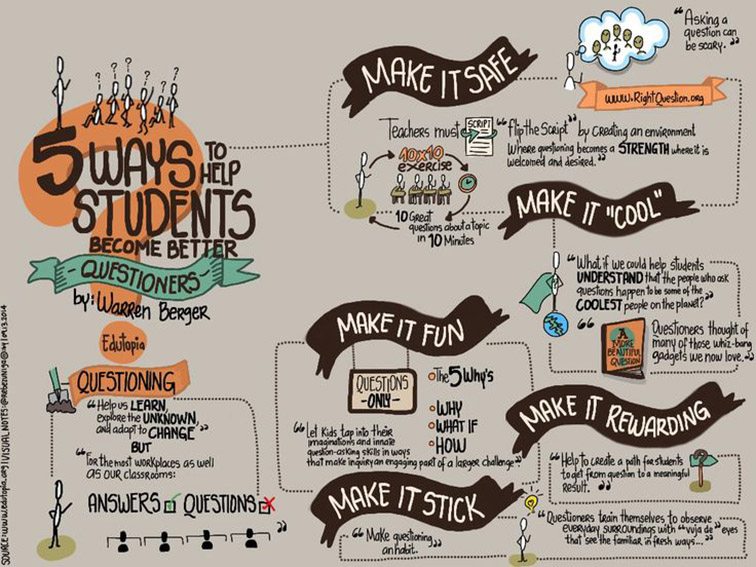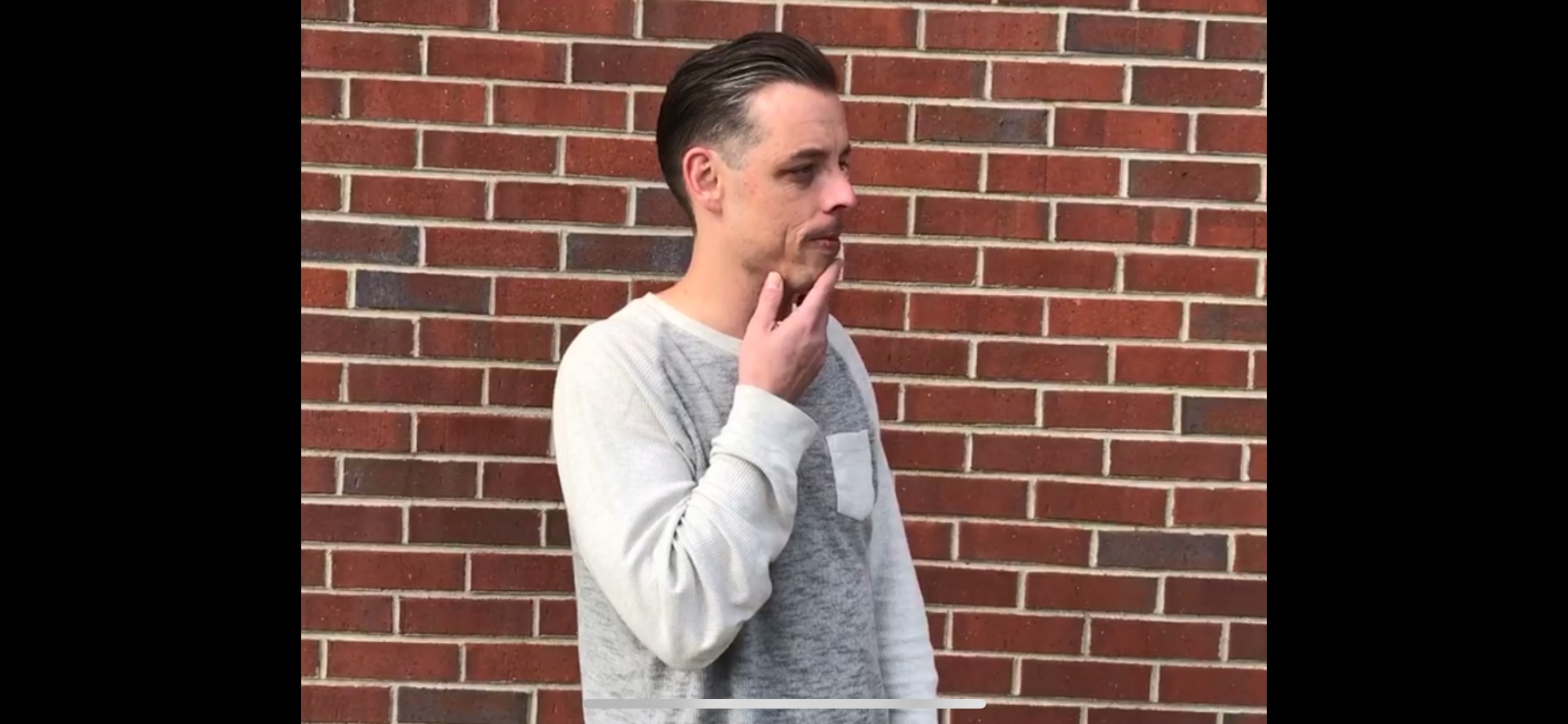
How To Help Students Ask Better Questions
There’s nothing I care more about than students, and there are few things I think can serve a student better than being able to ask the right question at the right time.
In “Why Questions Are More Important Than Answers,” I said that “Questioning is the art of learning. Learning to ask important questions is the best evidence of understanding there is, far surpassing the temporary endorphins of a correct ‘answer.’ And while I sometimes disagree with things I say after hearing or reading them later, that still holds up.
I saw the above graphic a few months ago while I was researching question-formation strategies. That post is still about 2/3 finished but after that long, I thought it made sense to share this graphic to kind of frame that content whenever I finally get off my keister and get it together.
Warren Berger shared it on edutopia, so I thought I’d help build on it by adding some strategies for each of his ideas. Note: Berger is the author of A More Beautiful Question: The Power Of Inquiry To Spark Breakthrough Ideas (affiliate link), a worthwhile read for any educator or parent, if not grade 10+ student.
1. Make it safe to ask questions.
Use write-arounds, exit slips, or backchannel discussions for sharing inquiries.
2. Make good questions visible.
Publish the best examples. Have a question hall-of-fame. I called it ‘intellectual graffiti’ in my class. Students loved re-reading these–especially students from other classes who’d ask “Who asked this? Who said that?,” and were often floored at my responses.
3. Make it fun to pose queries.
Create a concept-map of the short and long-term effects of a great question. Write them on post-cards and have students #hashtag instagram or twitter posts holding said cards. (Here’s an old but still mostly useful post–twitter tips for teachers–with related ideas.)
4. Make it rewarding.
Give actual points for good questions. Give even more points when they improve existing ones. Create makeshift learning badges or ‘levels’ of questioning and inquiry that students can ‘achieve.’
5. Make it stick.
The more authentic and non-academic the great inquiries are, and the more often they’re revisited (naturally and authentically), the more they will stick. Help them ask great questions about their own lives, and create ‘assignments’ where they have to follow-through somehow on that inquiry.
Addendum by Terry Heick
6. Make it necessary
Create learning experiences (activities, lessons, units, etc.) that can’t function or ‘move forward’ without critical thinking.

